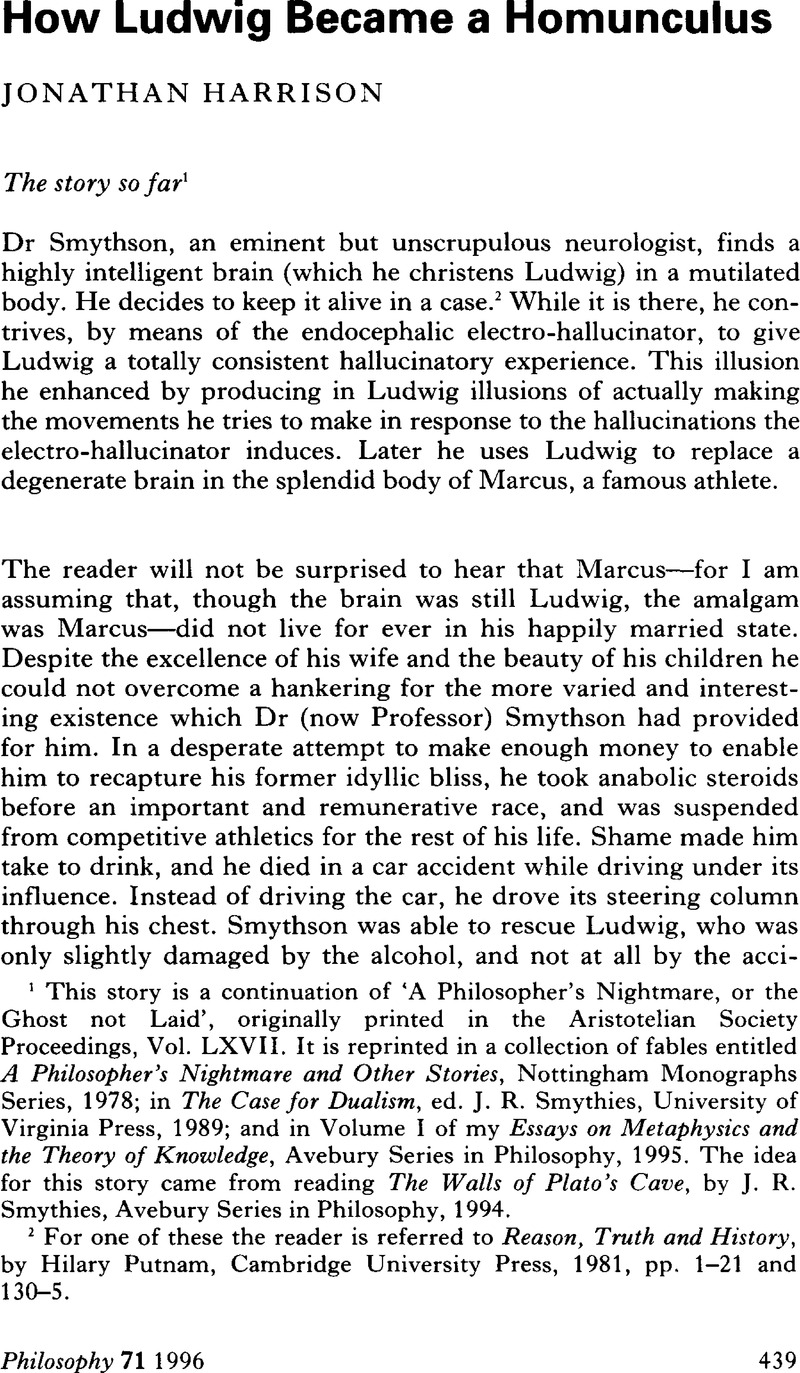No CrossRef data available.
Article contents
How Ludwig Became a Homunculus
Published online by Cambridge University Press: 30 January 2009
Abstract

Information
- Type
- Discussion
- Information
- Copyright
- Copyright © The Royal Institute of Philosophy 1996
References
1 This story is a continuation of ‘A Philosopher's Nightmare, or the Ghost not Laid’, originally printed in the Aristotelian Society Proceedings, Vol. LXVII. It is reprinted in a collection of fables entitled A Philosopher's Nightmare and Other Stories, Nottingham Monographs Series, 1978; in The Case for Dualism, ed. J. R. Smythies, University of Virginia Press, 1989; and in Volume I of my Essays on Metaphysics and the Theory of Knowledge, Avebury Series in Philosophy, 1995. The idea for this story came from reading The Walls of Plato's Cave, by J. R. Smythies, Avebury Series in Philosophy, 1994.
2 For one of these the reader is referred to Reason, Truth and History, by Putnam, Hilary, Cambridge University Press, 1981, pp. 1–21 and 130–5.Google Scholar
3 For a similar view to be taken of experience other than visual experience Dr Smythson would have had to make use of an earlier invention, reported by Aldous Huxley in Brave New World, and called ‘the feelies’.
4 I believe that the bodies of Daleks were made of metal, though what was inside them was organic. Precisely what was inside them I do not know.
5 It was easier to do this in Ludwig's case than in that of a person who could move about, for Ludwig could not help but take the screen with him everywhere he went.
6 In ‘Let There be Light' (in A Philosopher's Nightmare and Other Stories, loc. cit.) I suggested that one reason why we do not think that we are seeing the world through a television screen is that it does not have, like an artificial television set, mahogany edges.
7 Taking advantage of a view of Strawson's leads me to think that ‘Ludwig' is not a name for a brain, but for the person who owns the brain. In that case, Marcus is Ludwig.
8 I am here suggesting that it makes no difference to whether there are sense-data or pains, intervening between stimulus and response, whether the brain is artificial or natural. Either there is a difference between the natural brain and the artificial one or there is not. If there is a difference, then the difference might explain why there are sense-data, etc., in the case of the natural brain but not in the case of the artificial one; if there is no difference, then, since there are sense-data, etc., in the case of the natural brain, there must also be sense-data, etc., in the case of the artificial one.

